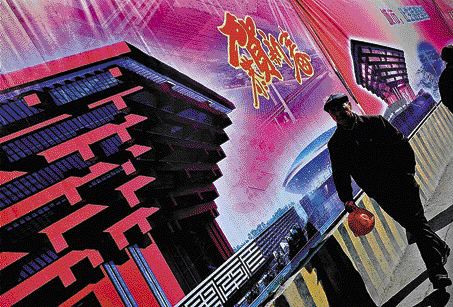|
|


ADVERTISEMENT
Buy Your own advertising
spaces!
.
Download Adobe Acrobat Reader to open [PDF] files.
Recent Visitors
Nothing will get in the way of the greatest show on Earth
2010. 4 March
 A man walks past a billboard in Shanghai showing the Chinese pavilion and promoting the $60-billion World Expo 2010, which starts on May 1 and aims to draw up to 100 million visitors.
Photograph by: Philippe Lopez, AP
A man walks past a billboard in Shanghai showing the Chinese pavilion and promoting the $60-billion World Expo 2010, which starts on May 1 and aims to draw up to 100 million visitors.
Photograph by: Philippe Lopez, AP
by Malcolm Moore, The Daily Telegraph
(ottawacitizen.com)
t is the biggest event you have never heard of. In the middle of Shanghai, by the banks of the muddy Huangpu river, an area a few kilometres square is preparing to receive 70 million visitors.
The occasion is the World Expo, a jamboree of nations that started with the Great Exhibition in London in 1851. In the West, these world's fairs have lost their lustre, held in the decidedly dowdy surroundings of Spokane or Hanover. No one is quite sure what they are for.
But China has allocated the event -- opening May 1 for six months -- a budget of about $60 billion, almost twice what it spent on the Beijing Olympics. And the normally restrained Wen Jiabao, China's prime minister, has described the Shanghai Expo as the culmination of a 100-year-long march of history. "It has a huge influence on mankind," says Wen, with a touch of hyperbole.
If the Great Exhibition was the moment that Britain showed off its power, at the height of the Industrial Revolution, then China hopes the Shanghai Expo is its time to shine. Every country wishing to do business here in the future is obliged to attend, meaning that more than 240 nations have spent hundreds of millions of dollars building pavilions. Macau has constructed a giant silver rabbit, Japan has a "Purple Silkworm Island," a lilac dome filled with robots, Britain has created a fuzzy cube, spiked with thousands of floating fibre-optic cables and Canada has built a massive red cedar pavilion featuring a host of green technologies.
Behind the scenes, diplomats and businessmen are hoping to court China's rich investors.
The shift in the balance of power between West and East can be glimpsed on the Bund, Shanghai's waterfront, where a giant bronze bull is being craned into position. The statue is a replica of the Charging Bull that stands on Wall Street, and is cast by the same artist. But at six tonnes, it is twice the size of its American sibling. There could be no clearer statement about the ambition of this city, once the linchpin of Chinese trade with the West, to rival New York, London and Tokyo as a global financial centre.
As with the Olympics, the renovations are breathtaking. With under two months to go before the Expo, every street has been repaved, every building has had a new lick of paint. Six new subway lines have been built.
While many of Shanghai's colonial-era architectural treasures are being restored, bulldozers also have razed whole neighbourhoods so that the city can look as modern and shiny as possible.
And, as it did in Beijing, the Chinese government has used the Expo as an opportunity to "educate" residents about proper civic behaviour.
"People have become much more civilized and well-behaved," says Li Xiaoxuan, the owner of a handbag shop. "Because of the Expo campaign, there has been much less littering, queue-jumping and shouting in the street."
But as the big day approaches, the Communist Party has been seized by a frantic paranoia. Magazines had negative articles censored; one was forbidden to use the word "Expo" on its cover. A local punk band, Top Floor Circus, was called in by the police and given a warning after writing a song that parodies the Beijing Olympic ditty, Beijing Welcomes You. Their version, which includes the lyrics "Shanghai doesn't welcome you, unless you have come to buy something," was instantly banned.
Despite promises to participants in the Expo that Shanghai would not become a police state, security forces are ready to blanket the city starting this month. Reporters have been followed by the secret police while conducting interviews. Many activists are planning to leave the city during the six-month event, for fear of being imprisoned in a "black jail," an unofficial and illegal detention centre.
According to one local source, the government has built two new "mental asylums" in the city that will be used to lock up dissidents.
"The public security forces have thought everything through and are ready," says Chen Qiyong, a dissident. "I was told recently that the situation is very tense and I shouldn't do anything radical."
© Copyright (c) The Ottawa Citizen
Source: www.ottawacitizen.com


